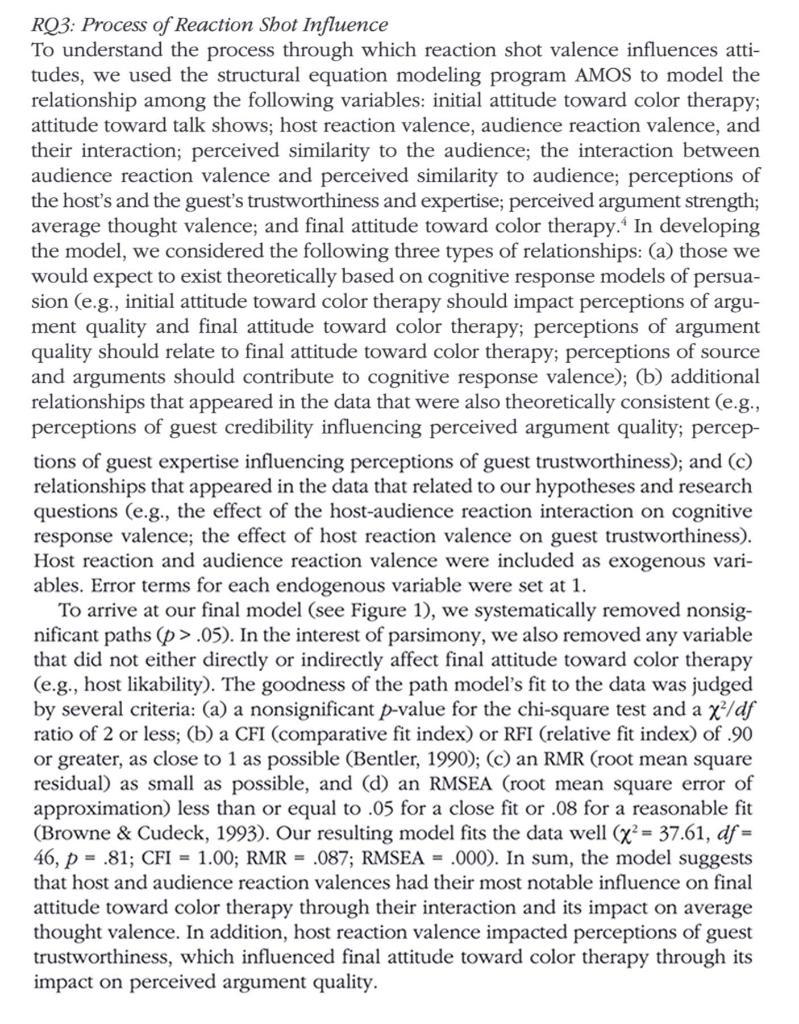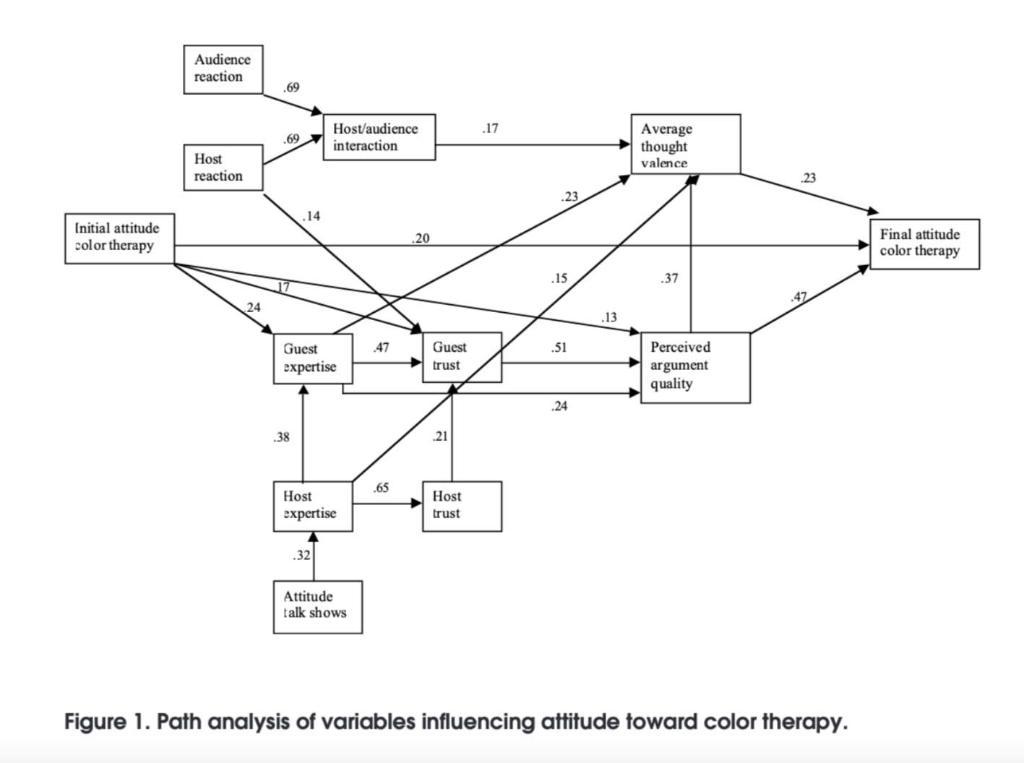Question
Did the hosts reaction have a greater effect on final attitude to color therapy through its interaction with audience response or its impact on the


Did the host’s reaction have a greater effect on final attitude to color therapy through its interaction with audience response or its impact on the guest trustworthiness?
What is the direct effect of initial attitude on color therapy to final attitude on color therapy? What is the total indirect effect of initial attitude on color therapy to final attitude on color therapy? (HINT: there are MANY indirect paths.) Are you surprised at the relative magnitudes of the direct and indirect impacts?
What is the practical takeaway or benefit of this study? How can it be useful to the industry?
RQ3: Process of Reaction Shot Influence To understand the process through which reaction shot valence influences atti- tudes, we used the structural equation modeling program AMOS to model the relationship among the following variables: initial attitude toward color therapy; attitude toward talk shows; host reaction valence, audience reaction valence, and their interaction; perceived similarity to the audience; the interaction between audience reaction valence and perceived similarity to audience; perceptions of the host's and the guest's trustworthiness and expertise; perceived argument strength; average thought valence; and final attitude toward color therapy. In developing the model, we considered the following three types of relationships: (a) those we would expect to exist theoretically based on cognitive response models of persua- sion (e.g., initial attitude toward color therapy should impact perceptions of argu- ment quality and final attitude toward color therapy; perceptions of argument quality should relate to final attitude toward color therapy; perceptions of source and arguments should contribute to cognitive response valence); (b) additional relationships that appeared in the data that were also theoretically consistent (e.g., perceptions of guest credibility influencing perceived argument quality; percep- tions of guest expertise influencing perceptions of guest trustworthiness); and (c) relationships that appeared in the data that related to our hypotheses and research questions (e.g., the effect of the host-audience reaction interaction on cognitive response valence; the effect of host reaction valence on guest trustworthiness). Host reaction and audience reaction valence were included as exogenous vari- ables. Error terms for each endogenous variable were set at 1. To arrive at our final model (see Figure 1), we systematically removed nonsig- nificant paths (p > .05). In the interest of parsimony, we also removed any variable that did not either directly or indirectly affect final attitude toward color therapy (e.g., host likability). The goodness of the path model's fit to the data was judged by several criteria: (a) a nonsignificant p-value for the chi-square test and a x/df ratio of 2 or less; (b) a CFI (comparative fit index) or RFI (relative fit index) of .90 or greater, as close to 1 as possible (Bentler, 1990); (c) an RMR (root mean square residual) as small as possible, and (d) an RMSEA (root mean square error of approximation) less than or equal to .05 for a close fit or .08 for a reasonable fit (Browne & Cudeck, 1993). Our resulting model fits the data well (x= 37.61, df = 46, p= .81; CFI=1.00; RMR = .087; RMSEA = .000). In sum, the model suggests that host and audience reaction valences had their most notable influence on final attitude toward color therapy through their interaction and its impact on average thought valence. In addition, host reaction valence impacted perceptions of guest trustworthiness, which influenced final attitude toward color therapy through its impact on perceived argument quality.
Step by Step Solution
There are 3 Steps involved in it
Step: 1
Based on the information and path analysis diagram provided we can assess the effects of various factors on the final attitude toward color therapy To understand the specific effects youve asked sever...
Get Instant Access to Expert-Tailored Solutions
See step-by-step solutions with expert insights and AI powered tools for academic success
Step: 2

Step: 3

Ace Your Homework with AI
Get the answers you need in no time with our AI-driven, step-by-step assistance
Get Started


